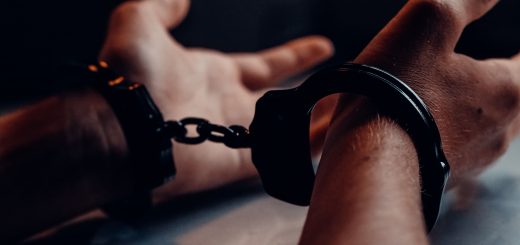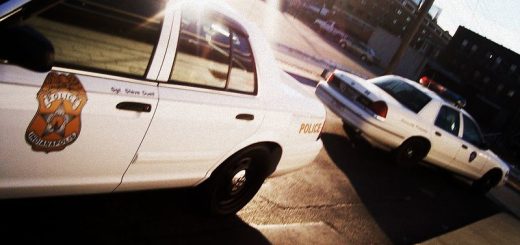Broadening the Scope of Self-defence: Accused’s “Role in the Incident” in R v Khill

For many people, self-defence means a person was desperate, in a kill-or-be-killed situation, and makes a split-second choice to save their own life. After R. v. Khill, 2021 SCC 37 (“Khill”), we know that’s not quite right. An accused’s role may be broad, made up of any conduct that shows whether they acted reasonably—not just in the moment, but during the entire incident, from beginning to end. Juries must consider this “role in the incident” in deciding whether an act was taken in self-defence.
History of the Case
Early one morning in 2016, Peter Khill was awoken by his partner and alerted to loud sounds outside their home. From the window, he saw that his truck’s dashboard lights were on. He got his shotgun from their closet, loaded it, confirmed that no intruders were inside, and went outside. He did not call 911. He approached the truck quietly and saw someone bent over inside the cab. He shouted to that person, Mr. Jonathan Styres, to put his hands up. Mr. Styres turned towards Mr. Khill. Mr. Khill thought Mr. Styres had a gun and fired twice. Mr. Styres died shortly thereafter. At trial, Mr. Khill claimed that he acted in self-defence.
The jury acquitted Mr. Khill. The Crown appealed to the Ontario Court of Appeal (“ONCA”), who held that the trial judge erred in failing to instruct the jury to consider the accused’s “role in the incident,” as required under s. 34(2)(c) of the Criminal Code, RSC 1985, c C-46. The Supreme Court of Canada (the “Court”) dismissed Mr. Khill’s appeal and affirmed the ONCA’s decision ordering a new trial. Justice Michael Moldaver concurred (for three justices), and Justice Suzanne Coté dissented alone.
Justice Sheilah Martin, for a majority of five, agreed with the ONCA that the trial judge’s failure to adequately instruct the jury was a reversible error warranting a new trial. She held that an accused’s “role in the incident” includes all the accused’s acts and omissions during the incident, from beginning to end, that were relevant to whether or not their self-defence act was reasonable. Here, Mr. Khill’s decisions not to call 911, to take and load his gun, and to confront the intruder were all relevant to whether the shooting was reasonable. The jury may have found differently if it had been clear that they must consider all of Mr. Khill’s conduct from the time he awoke to the time he fired his shotgun.
Elements of Self-defence
The three elements of self-defence are found in the Criminal Code, s. 34:
(a) [the accused] believe on reasonable grounds that force is being used against them or another person or that a threat of force is being made against them or another person;
(b) the act that constitutes the offence is committed for the purpose of defending or protecting themselves or the other person from that use or threat of force; and
(c) the act committed is reasonable in the circumstances.
In 2013, Parliament amended the Criminal Code through the Citizen’s Arrest and Self-defence Act, SC 2012 c 9 (“CASA”). Khill presented the Court with its first opportunity to consider the relationship between the old provisions and the amendments. Justice Martin employed approved statutory interpretation techniques to determine that the amendments broadened the scope and application of self-defence, unified the old approaches, and created a “multifactorial reasonableness assessment” (Khill, para 39).
“Role In the Incident” Includes all Conduct Relevant to Reasonableness
Justice Martin’s decision in Khill focused on the correct interpretation of s. 34(2)(c), “a person’s role in the incident,” within the new self-defence framework. It is only one factor to be considered in assessing reasonableness of the act in the circumstances. The question asked by this factor is, “who bears what responsibility for how this happened?” (Khill, para 86).
“Incident” can capture a range of behaviours over an expansive period of time. Justice Martin contrasts Parliament’s use of the words “incident” and “act” in all the s. 34(2) factors. “Act” is narrow and suggests a specific event. By contrast, “incident” is broad and suggests a sequence that ends with an act. An incident may span minutes, hours, or days.
The accused’s “role in the incident” considers all conduct that bears on the reasonableness of the ultimate act. The old laws limited the applicability of self-defence by requiring wrongfulness in an accused’s conduct prior to the actual self-defence act. The amendments removed this requirement and broadened the scope of situations in which self-defence is available.
Justice Moldaver attempts to keep the law the same in spite of the amendment, and not in light of it. He also insists that a person’s role is only relevant when it includes wrongful conduct that might deny their self-defence claim. He cites the Technical Guide for Practitioners (“Technical Guide”) that accompanied CASA:
where the facts suggest the accused played a role in bringing the conflict about, that fact should be taken into account in deliberations about whether his or her ultimate response was reasonable in the circumstances (Khill, para 192, emphasis original).
Justice Moldaver presumes that “a role” means “a wrongful role.” This, I think, misses the mark. “A role” clearly contemplates any role, and thus any conduct. To properly consider “reasonableness in the circumstances,” as required by s. 34(1)(c), triers of fact must understand the circumstances themselves. That would be impossible without including the accused’s acts in those circumstances. What Justice Martin has done in this respect is confirm that “circumstances” and “incident” can have similar temporal and behavioural scopes.
Results May Vary: Too Few Guidelines on Defining an Incident’s Scope
The third required element of self-defence is that the act be “reasonable in the circumstances.” The Court stressed that the “role in the incident” is only one factor in determining this reasonableness. However, it is clear that there must be some cases where the accused’s role could weigh so heavily that self-defence would not be available to them.
Justice Martin did not provide concrete examples of where an accused’s role may hinder or assist a self-defence claim. (It is worth noting that Justice Martin did say that a person “subjected to a pattern of abuse” “may be morally blameless” [Khill, para 101]; I explore this example more fully below.) Without expanding on how their role could be characterized, the Court has intentionally left a gap for triers of fact to fill. The Technical Guide provides only one example, “if the accused instigated the confrontation.” This, paired with Justice Martin’s question of “who bears responsibility,” may give rise to troublesome circumstances, as judges figure out how “role in the incident” should weigh.
Instigation and Responsibility
Consider a domestic abuse situation. The abuser has not yet instigated another assault, but the abused believes a physical attack is imminent. The abused person fear for their life. Honestly believing their life is in danger, they act with deadly force. They claim self-defence. What was the abused person’s “role in the incident?”
A narrower interpretation of “role in the incident” may consider only that the abused individual used deadly force on their partner. There was no ongoing confrontation. Even if there was, responding to the threat of physical assault with deadly force appears excessive and unreasonable. The abused person is clearly the instigator.
A broader interpretation considers the history of the relationship. This interpretation paints the abused person as the victim: they did not escalate and may have taken steps to avoid confrontation. On the broad view, it might seem more reasonable that the abused person believed their own life was at stake. The facts have not changed, but reasonableness is understood quite differently.
What if the relationship spans years, and been abusive throughout? If it only recently turned abusive? If it has lasted only weeks?
The problem is that, with the current interpretive guidelines, both interpretations of “role of the incident” remain possible in each of the above variations. A trier of fact may use the stricter guidance of the Technical Guide and Justice Martin’s question together to say that, as the abused partner instigated the final confrontation and used a greater amount of force, they bear greater responsibility for the outcome. A different trier of fact may find that the abused person did not instigate violence in the circumstances and thus has less responsibility.
Choice Informs Reasonableness
Is the accused’s act less reasonable where their conduct leading up to it suggests that they put themselves in that position? Consider whether the abused person’s actions seem less reasonable if, when they went home, they already knew that their partner was upset. Are they unreasonable in defending themself from an assault, or the threat of one, because they knew their partner was upset and went home anyway?
The abused partner’s use of deadly force may seem unreasonable in its immediate context but reasonable in its broader context. However, the abused partner’s choice to go home may make their later choice to use deadly force less reasonable—after all, they knew what they were walking into. Isn’t it possible that they went home intending to take steps to end their abuse? If that were so, surely they shouldn’t be allowed to shield their wrongdoing by calling it self-defence.
The importance of the multifactorial approach is clear. Juries have flexibility in how much weight to give the “role in the incident” so long as they consider it. What the Court has left open is how to weigh this factor. And conspicuously absent are clear guidelines on how to define its limits.
How Will Trial Judges Define “Incident” for Juries?
On jury instruction, Justice Martin explains:
In relation to a “person’s role in the incident” the trial judge will inquire into whether the accused bears some responsibility for the final confrontation and whether their conduct affects the ultimate reasonableness of the act in the circumstances. The trial judge must also provide guidance by directing the jury to the relevant evidence in respect of the accused’s “role in the incident” and each of the other relevant factors (Khill, para 114).
That trial judges must direct the jury to consider the accused’s “role in the incident” is clear. In doing so, trial judges must decide precisely where the incident begins and ends.
The incident ends with the act that forms the subject of the offence, and thus the self-defence claim. But how will trial judges define the beginning? In Khill, all three decisions agree that the incident began when Mr. Khill awoke and heard noises outside. I expect that in less clear-cut cases, where the incident begins could be a controlling issue.
In Khill, the Court did not have to expand on how to determine the beginning of an incident, but it isn’t difficult to imagine a situation where the beginning may be ambiguous—and where the incident began might determine the outcome.
In my domestic abuse example, the scope of the incident may be difficult to define but central to the inquiry. Courts might allow the assault directly before the shooting to form part of the incident. Whether that is sufficient to explain all of the circumstances, however, is not immediately clear. But a broader scope may be seen as unmanageable; courts might refuse to dissect an entire relationship, especially if it spanned years. Yet in this case, to properly understand an accused’s “role in the incident” could require exactly that—or at least something more than a single act, night, or week.
One pattern that might emerge is that the closer the parties, the more difficult—and more important—it may be to precisely identify an incident’s beginning and end. The incident and relationship involved could be fleeting and impersonal (as in Khill); brief and familiar (see Smithers v. R., [1978] 1 SCR 506); or lengthy and intimate (see R. v. Lavallee, [1990] 1 SCR 852). Where parties know each other well, greater care might be taken in defining the incident.
Conclusion
An accused’s “role in the incident” includes all of the accused’s acts and omissions during the incident, from beginning to end, that are relevant to whether or not their self-defence act was reasonable. This holding sheds light on the Criminal Code’s new multifactorial approach to self-defence, and calls for a holistic evaluation of an accused’s actions that, I think, is positive.
Unfortunately, in shedding light on this issue, the Court has created yet more questions. How should trial judges determine an incident’s beginning? How do they characterize the accused’s role within it? Lines must be drawn, and Khill provides little guidance on how to draw them. For now, trial judges will have to figure this step out on their own.







Join the conversation